SIVGA SV021 Robin Classic Rosewood wooden headphones have lived on my desk and around my neck for the last eight days, filling the role usually reserved for closed-back studio cans in my daily routine.
From crack-of-dawn writing blocks to late-night jazz sessions, I kept them close and took notes on every pleasant surprise and every little frustration. What follows is a detailed walk-through of that time together, so by the end you will know whether the SV021 Robin belongs in your listening stack or should remain a showroom curiosity.
Unboxing – What’s Inside?
Sivga’s packaging feels closer to boutique hi-fi than mass-market tech. A sturdy charcoal sleeve slips off to reveal a matte black box with silver foil lettering and an understated logo. Lift the magnetic lid and you meet a linen-textured insert holding the headphones upright, cups facing outward to show off the polished rosewood. No plastic tray, no peeling tape, just a foam cut-out lined with soft fabric.
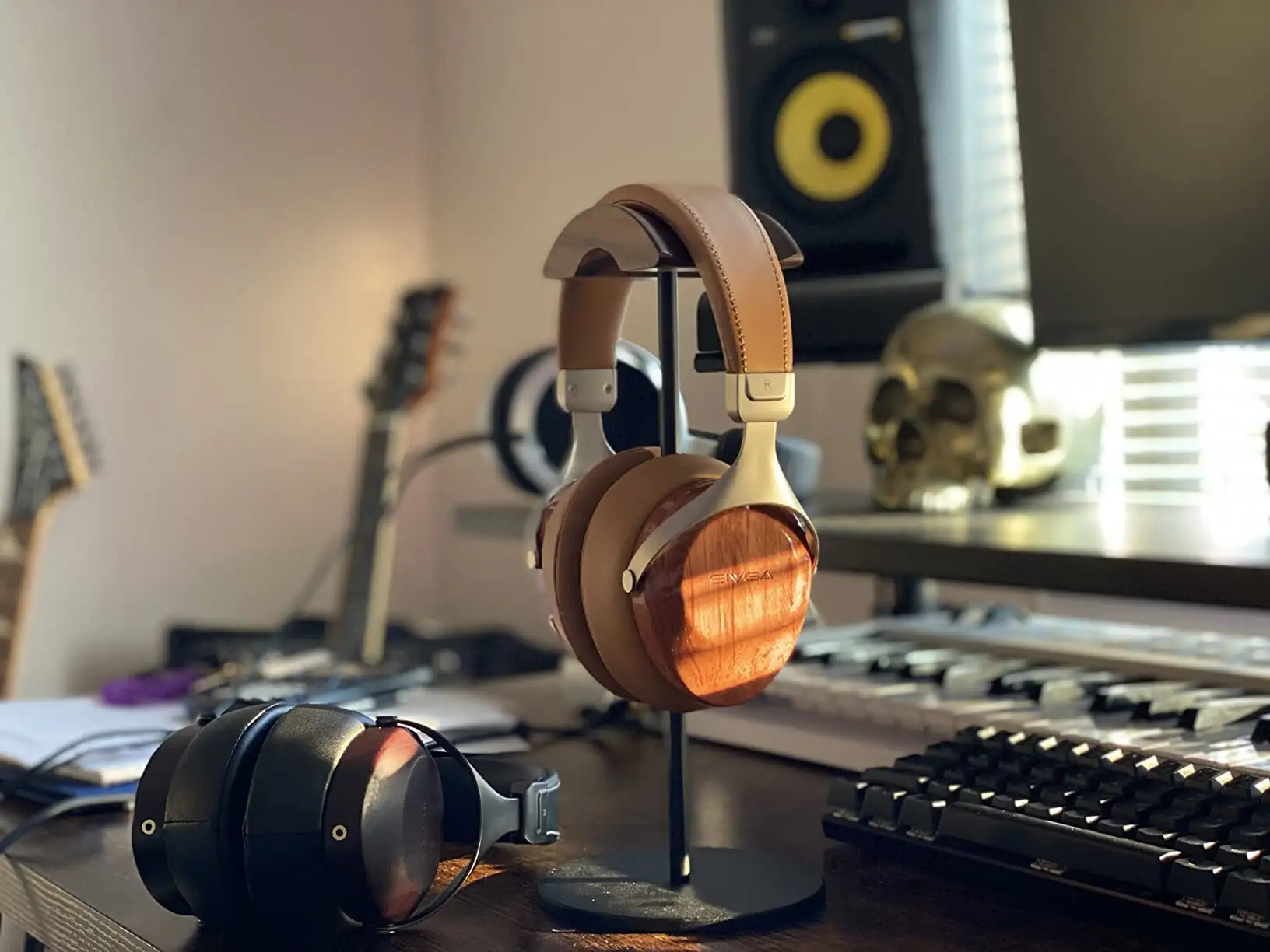
Below the headphones sits a hemp-style drawstring pouch, thick enough to keep the wood from scuffing in a backpack. Dig deeper and you find a braided 1.6-meter detachable cable terminated in a three-and-a-half-millimeter plug, finished with matching rosewood accents on each connector. A quarter-inch adapter, a cloth wipe, and a slim booklet complete the bundle. It is not lavish, yet every piece feels intentionally chosen to fit the classic theme.
| In the Box | Description |
|---|---|
| SIVGA SV021 Robin headphones | Solid rosewood cups, detachable cable sockets |
| Braided OFC cable | 1.6 m, 3.5 mm plug, rosewood trim |
| 6.35 mm adapter | Screw-on, gold-plated |
| Hemp drawstring pouch | Soft interior lining |
| Cleaning cloth | Micro-fiber for wood and pads |
| Quick guide | Specs, care tips, warranty |
First impressions lean warm and organic. The grain patterns differ on each cup, so no two pairs look exactly alike. Metal yokes pivot smoothly with no squeak. Picking them up you notice real heft from the wood, yet the pads feel airy. The unboxing sets a calm, almost vintage mood before a single note has played.
Specifications
| Feature | Detail |
|---|---|
| Driver | 50 mm dynamic, polycarbonate diaphragm |
| Impedance | 32 Ω |
| Sensitivity | 105 dB ± 3 dB |
| Frequency response | 20 Hz – 20 kHz |
| Weight | ~ 275 g (without cable) |
| Ear pads | Memory foam, protein leather |
| Housing | Solid rosewood with stainless steel yokes |
| Cable | 1.6 m detachable, dual 2.5 mm to 3.5 mm |
| Connector | 3.5 mm, 6.35 mm adapter included |
| Clamp force | Medium-light, fixed band (not segmented) |
SIVGA SV021 Robin Manual
The booklet covers essentials rather than marketing slogans. It begins with a note about wood grain variations, reminding owners that small color differences are normal. Basic care tips urge a light cloth wipe after use, no alcohol cleaners, and storage in a dry space to protect the finish. The manual lists a two-year warranty and includes a simple resistance chart explaining why portable devices can drive the thirty-two-ohm load easily. There are no companion apps, no firmware updates, and no button controls; these are pure analog cans, so the manual focuses on fit, cleaning, and cable safety.
Comfort for Long Listening Blocks
Sliding the SV021 Robin on for the first time, the headband settles softly thanks to a suspended inner strap. The clamping pressure sits in a sweet spot: secure enough to keep the wood cups from shifting when you lean forward, light enough that I never felt temples pinched. Oval pads carve out generous ear space, and the memory foam rebounds slowly, so seal stays consistent during jaw movement or head turns.
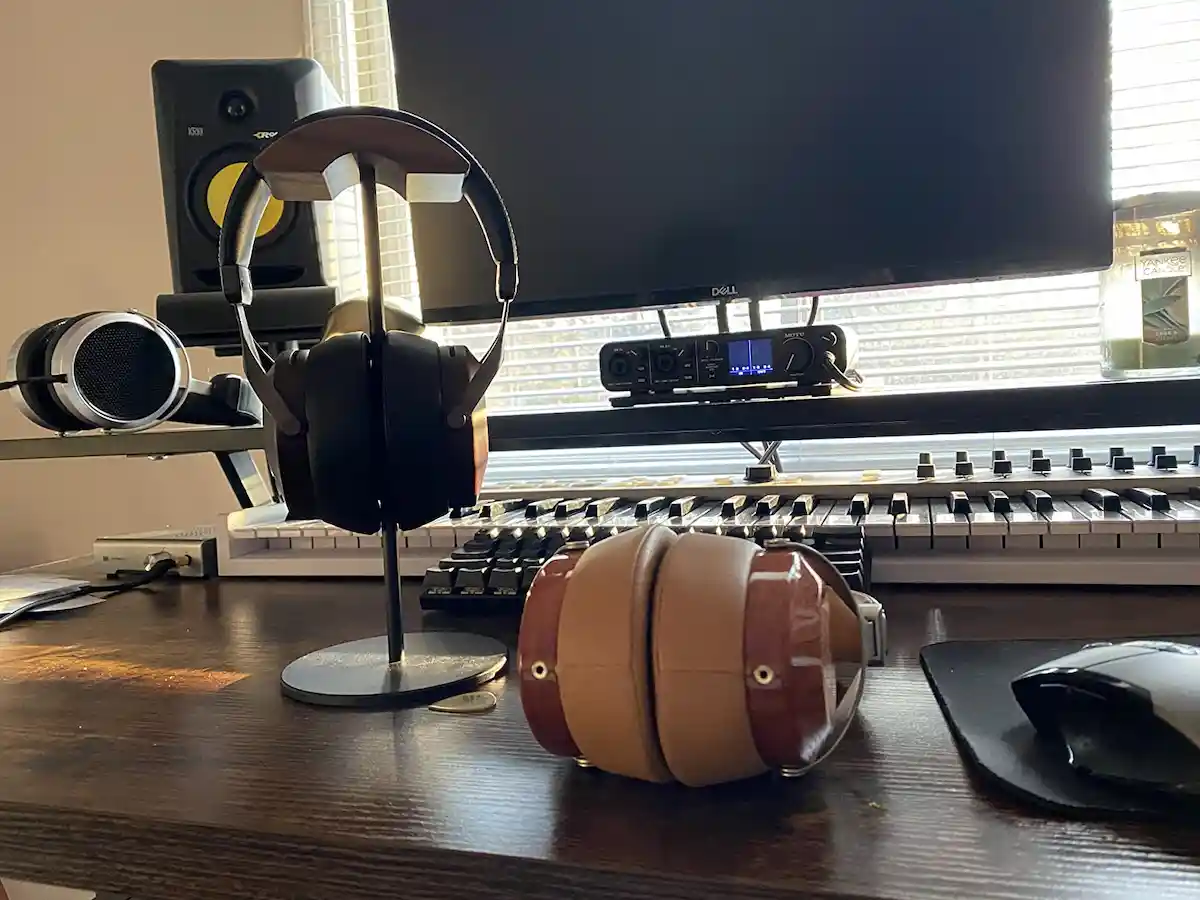
Across an entire afternoon of photo editing they remained friendly. Heat build-up stayed low, partly because the pads use thin protein leather with a breathable backing. Weight feels moderate. At two-hundred-seventy-plus grams these are heavier than typical plastic studio sets, yet the balance places most mass near the pads rather than the crown. After five days I stopped noticing the headband at all, a sign of good ergonomics.
Daily Handling and Cable Etiquette
Detachable cables use dual two-point-five-millimeter mono jacks, snapping in firmly with audible clicks. The stock cable is flexible, does not kink, and the braided sleeve resists tangles. Microphonics are minimal; running the cable across a wooden desk produces a dull thud rather than a sharp rustle. The ninety-degree plug clears phone cases and portable DACs without stress.
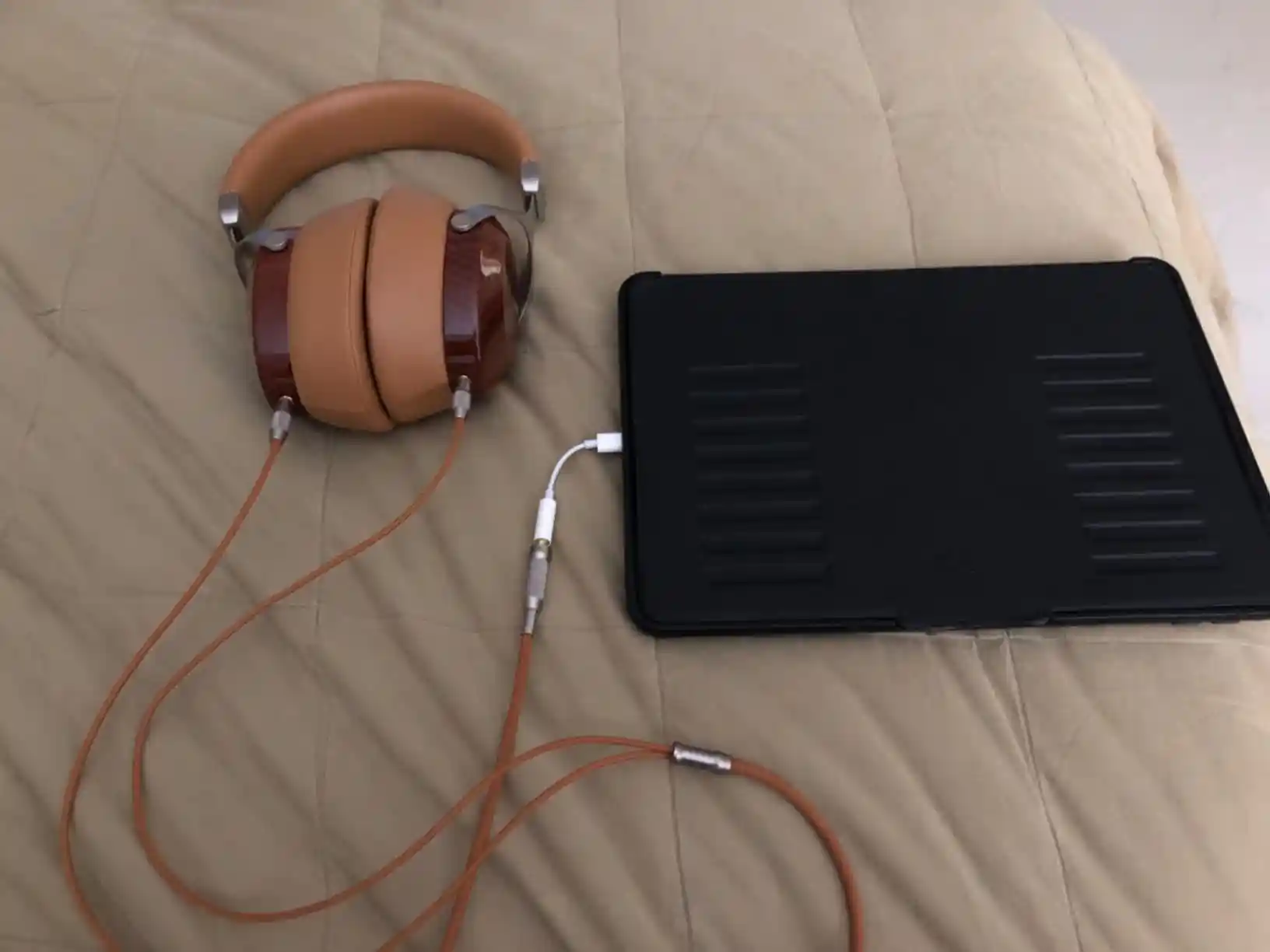
Because the cups rotate a full ninety degrees, I could lay the headphones flat on my chest during breaks, avoiding pad distortion. The yoke hinges are silent. No ratchet clicks, just smooth resistance. I flicked them open dozens of times and never felt wobble. For transport I slid them into the hemp pouch, tossed them in a backpack among notebooks and a compact DAP, and encountered no scratches after the commute.
Sound Test Method
For consistency I level-matched all sources to seventy-five decibels using pink noise and a basic SPL meter. Gear included a FiiO BTR7 in USB DAC mode, a Shanling UA3 on Android, and a Motu M2 on desktop. I streamed FLAC from Qobuz and ALAC from local storage. Reference sets were Sennheiser HD 6XX (paired with a Magni amp) and Audio-Technica ATH-M40x for a studio baseline. Test playlists covered ambient, progressive rock, orchestral scores, and modern pop.
Audio Performance – General Tuning
The first track I queued was Nick Drake’s “Pink Moon.” The SV021 Robin immediately revealed a mellow tilt. Bass sits present but controlled, extending smoothly to around forty hertz before rolling off. Midrange warmth brings acoustic guitars and male vocals slightly forward. Upper mids stay relaxed; female vocals sound natural, never sharp. Treble lifts gently near eight kilohertz, adding enough air to separate cymbal shimmer without pushing sibilance.
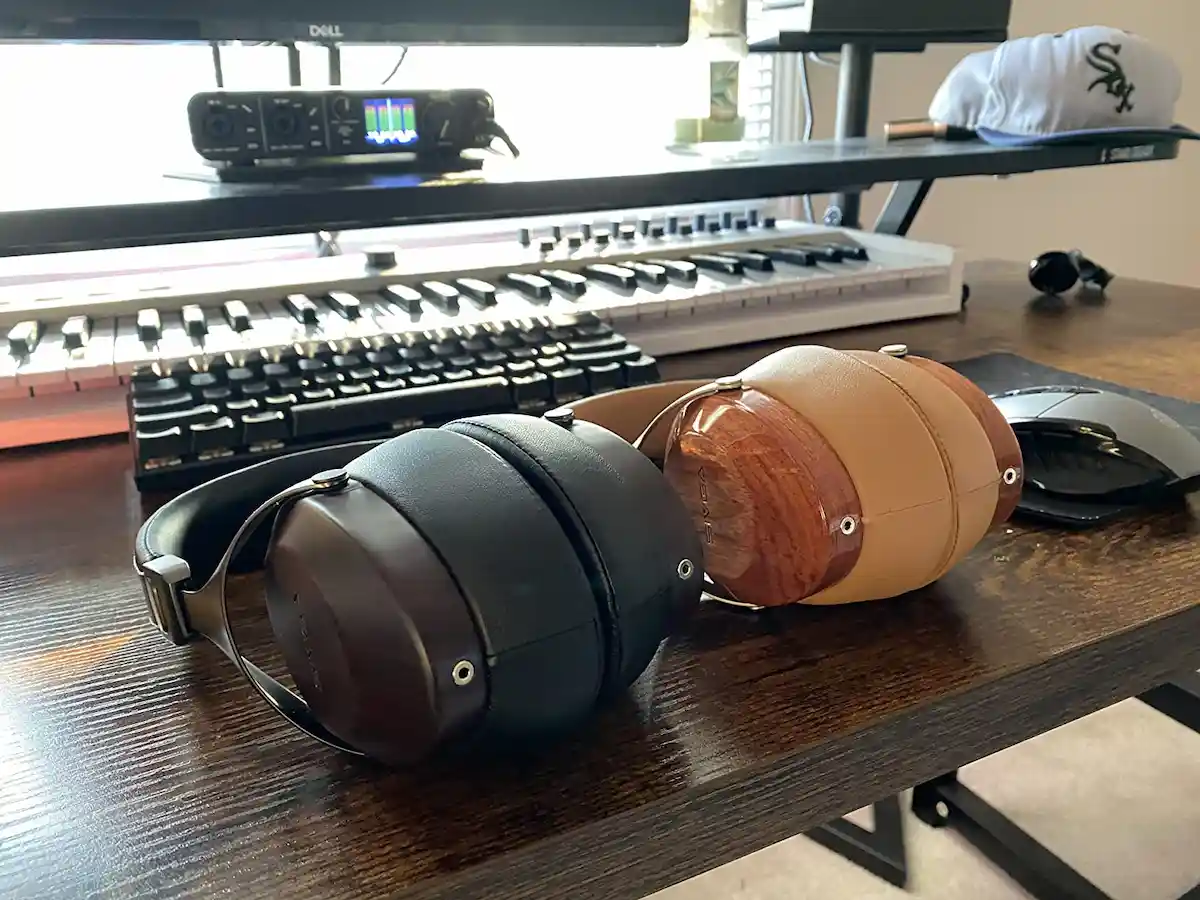
Stereo width surpasses most closed-back headphones in its class. Instrument placement has room to breathe, and subtle reverb tails remain audible even on dense mixes like Radiohead’s “Weird Fishes.” Imaging, while not razor-sharp like an open HD 600, is convincing enough to pick out a rhythm guitar two feet left of center.
Bass
Sub-bass does not punch like planar drivers, yet the SV021 Robin keeps a tidy texture. On Massive Attack’s “Angel,” the low end comes through with a solid foundation but remains polite. Wood housings sometimes add mid-bass bloom, though here the engineers dialed in damping to avoid mud. Switching to wired hip-hop tests like Kendrick Lamar’s “DNA,” the kick hits firmly but releases cleanly, letting bass guitars remain distinct.
Midrange
Rosewood housings impart a gentle resonance that flat-tuners might call colored; I call it pleasant. Vocals in Fleetwood Mac’s “Dreams” stand a hair closer than neutral, lending intimacy. Electric guitars gain a touch of body, perfect for blues recordings. If you crave analytical neutrality, this warmth may feel romanticized, but long sessions benefit from the smooth flow.
Treble
Treble extension reaches roughly sixteen kilohertz before tapering. Cymbals carry a realistic decay, and strings keep bite without glare. I never reached for an EQ to tame peaks, even during hour-long mixes of orchestral film scores rich in French horn swells. Detail retrieval falls short of high-end Focal or Beyerdynamic cans, yet the Robin reveals more micro-texture than rivals in its price band, thanks partly to the wooden cup resonance properties.
Wired vs Amped Driving
At thirty-two ohms and one-hundred-and-five decibels sensitivity, the SV021 Robin runs happily from a smartphone. Still, giving them a clean dongle DAC or small desktop amp tightens bass and nudges stage width. On the Motu M2, dynamics popped snare hits on Snarky Puppy’s “Shofukan” had sharper edges. Onboard laptop jacks sounded flatter but still enjoyable. Audiophiles already owning a budget amp will unlock a little more sparkle; casual listeners can plug directly into a phone and lose very little.
Isolation and Sound Leakage
Being closed-back, the Robin cuts out a fair share of room noise enough that I could focus in a café without ANC. At home, a window AC hum dropped significantly. Leakage is minimal; playing Pink Floyd at moderate volume did not bleed into my partner’s call five feet away. For office environments, they remain polite neighbors when you keep volume reasonable.
Build Quality and Longevity
Wood cups receive two layers of transparent lacquer, giving subtle gloss while keeping grain exposed. After a week of daily handling no scratches or fingerprints appeared. The stainless steel yokes feel rigid, and screws are recessed into the frame, reducing snag risk. Headband stitching is tidy. Pads are user-replaceable, with Sivga selling spares for around twenty dollars, and third-party velour pads fit as well. Cable jacks sit flush, so aftermarket cables are easy to source. Overall, construction inspires confidence unlike many plastic competitors in the same price tier.
SIVGA SV021 Robin vs Competitors
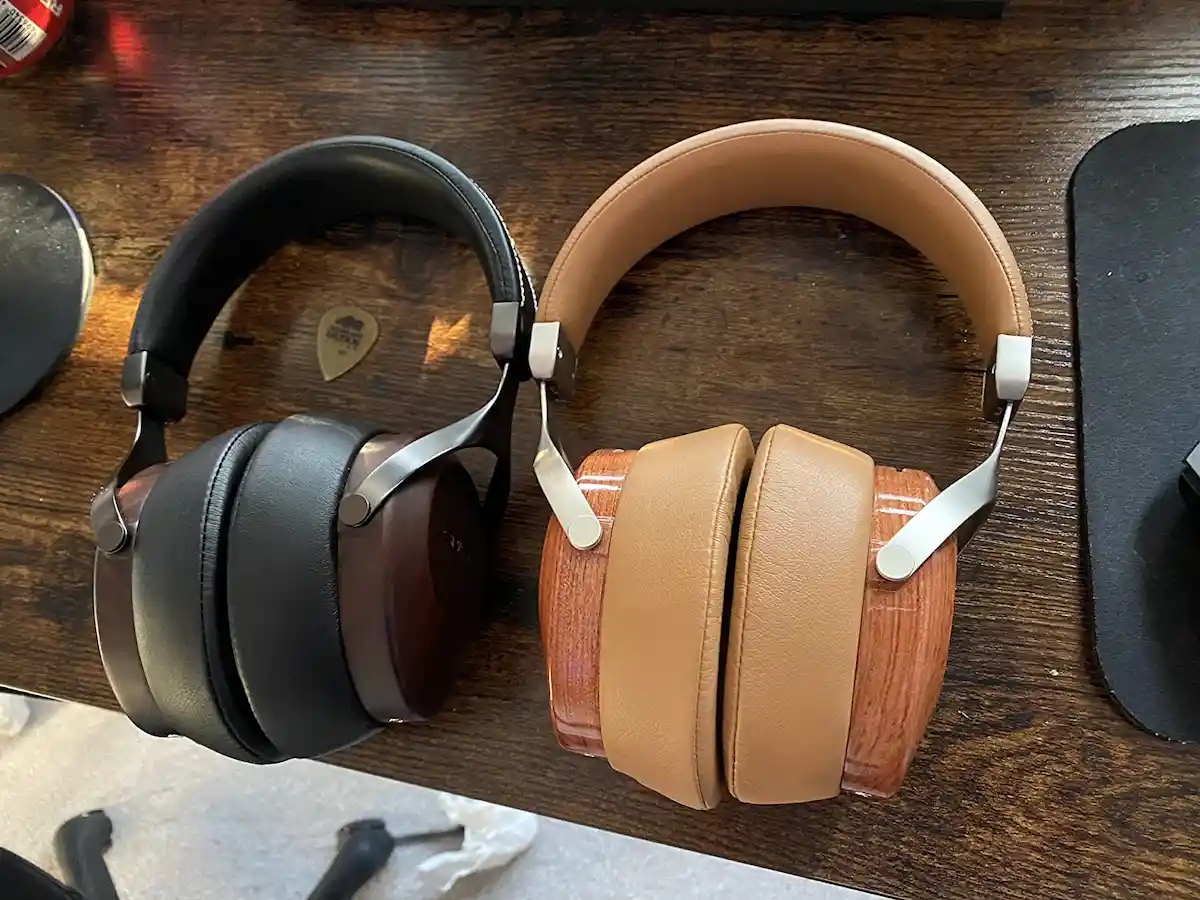
Robin vs Meze 99 Neo
Both use wooden cups, though the Meze opts for walnut veneer and retails higher. The Meze has stronger mid-bass warmth but narrower stage. The Robin edges ahead in treble air and offers detachable dual-sided cables, whereas the Meze uses a single input. Comfort is comparable, though the Meze clamps a bit tighter.
Robin vs Audio-Technica ATH-M50x
The M50x is studio-focused with brighter treble and deeper sub-bass. It isolates slightly better but can sound fatiguing. The Robin trades a bit of isolation for a more relaxed midrange and superior wood aesthetics. If you mix audio, the M50x remains relevant; for casual listening, the Robin feels friendlier.
Gaming Experience
The SIVGA SV021 Robin isn’t aimed at gaming, but I’ve had a few games with it to see how it holds up. It doesn’t have any surround modes or a mic, so you won’t be jumping into Discord calls with these, but the audio is clear, with enough detail to catch footsteps and voices without bass drowning things out.
The lightweight build and soft pads make it easy to wear for a while, and I had no pressure points even with glasses. There’s no game chat mix or software EQ, but you just plug in and go. It won’t replace your EPOS Sennheiser GSP 602 or TAG5106 if you want wireless and chat, but if you want something music-focused that can take on a few gaming sessions here and there, it does a decent job.
Final Thoughts
Our Score: 87.0
The SIVGA SV021 Robin Classic Rosewood wooden headphones blend handcrafted looks, inviting comfort, and a balanced warm sound that flatters most genres. They will not replace open-back detail monsters, but for closed-back enjoyment in shared spaces, they strike a lovely equilibrium. Battery and ANC are non-issues because everything is purely wired, making them future-proof against codec shifts. At roughly one-hundred-and-fifty dollars they face tough competition, yet the Robin’s wood charm and fatigue-free tuning give them a unique corner of the market.
SIVGA SV021 Robin Classic Rosewood Wooden Headphone

The SIVGA SV021 Robin features a handcrafted classic rosewood housing for natural acoustics, delivering warm and detailed sound with 50mm dynamic drivers. Its over-ear design, plush memory foam earpads, and adjustable headband ensure long-lasting comfort, making it perfect for both casual listening and professional use.
Product SKU: SV021-ROSEWOOD
Product Brand: SIVGA
Product Currency: USD
Product Price: 149.00
Price Valid Until: 2030-12-31
Product In-Stock: InStock
4.5
The SIVGA SV021 is available on Amazon.
Pros
- Beautiful rosewood housings with unique grain
- Warm, engaging tuning with polite treble
- Comfortable suspension headband and plush pads
- Detachable cable with rosewood-trimmed connectors
- Easy to drive from phones and portable DACs
- Low leakage for office or late-night use
Cons
- Micro-USB charging not applicable (purely wired)
- Slight mid-bass bloom may mask detail for purists
- No folding hinges beyond flat rotation
- Pads build warmth after very long sessions